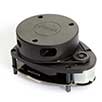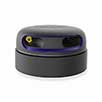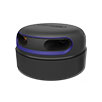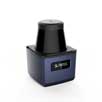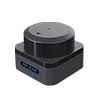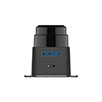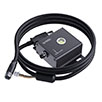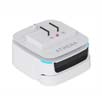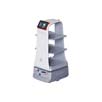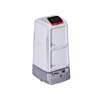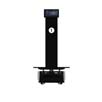With the continuous evolution of technology, obstacle avoidance capability has become one of the key development areas for robots. In order to achieve intelligent obstacle avoidance for robots, various advanced sensors have emerged. This article will delve into the role of key sensors in enhancing robot navigation performance.
① Lidar
Lidar is a highly precise sensor that utilizes laser beams to scan the surrounding environment and measure the distance and shape of objects. It excels in mapping and localization, allowing robots to perceive their surroundings more accurately.
For example, in the case of the RPLIDAR series Lidar by Slamtec Corporation, a leading provider of robot positioning and navigation technology, Slamtec has years of research and practical experience in the field of core sensors. Its RPLIDAR series Lidar is widely used in various service robot scenarios such as restaurants, banks, shopping malls, and parks. From the triangular ranging Lidar RPLIDAR A1, A2, A3 to the TOF Lidar RPLIDAR S1, S2, S3, LPX-T1, Slamtec’s Lidar exhibits excellent ranging performance even when faced with challenging low-reflectivity objects such as dark colors. It can achieve a maximum range of 15 meters with a 10% reflectivity rate and has capabilities for detecting transparent glass, dark objects, small objects, and high-reflectivity objects. With a working performance exceeding 80Klux, Slamtec’s Lidar is capable of operating even in sunlight, demonstrating various breakthrough capabilities.

② Infrared Sensor
Infrared sensors are commonly used in robot obstacle avoidance systems. By detecting the infrared reflected by objects, these sensors can accurately measure the distance between objects and the robot, helping the robot avoid obstacles.
③ Ultrasonic Sensor
Ultrasonic sensors operate similarly to the echolocation of bats, emitting ultrasonic waves and measuring their echoes to determine the distance to objects. These sensors are commonly used to detect obstacles in front of the robot and have a large detection range.
④ Vision Sensor
Vision sensors primarily utilize monocular and binocular cameras, depth cameras, video signal digitizers, or DSP-based fast signal processors and other external devices to acquire images. They then optically process the surrounding environment, compress the collected image information, and feed it back to a learning subsystem consisting of neural networks and statistical methods. The subsystem then correlates the collected image information with the actual position of the robot to achieve localization. Vision sensors have advantages such as simple structure, diverse installation methods, no sensor detection distance limitation, and low cost. However, they are greatly affected by ambient light and cannot work in dark areas (textureless areas).
Slamtec Corporation has emerged as China’s first low-cost Lidar supplier, challenging foreign market monopolies and lowering the barrier for Lidar adoption. By employing innovative image-based Lidar design, Slamtec captures images of light reaching target objects through cameras, adjusts the camera image size based on distance, successfully breaking industry monopolies, overcoming technical bottlenecks, and bringing low-cost, high-performance Lidar products to China.

